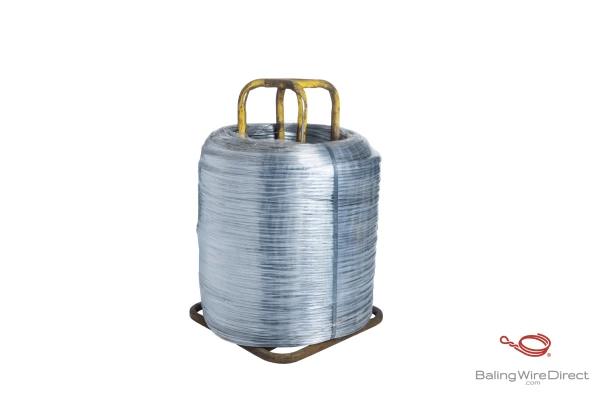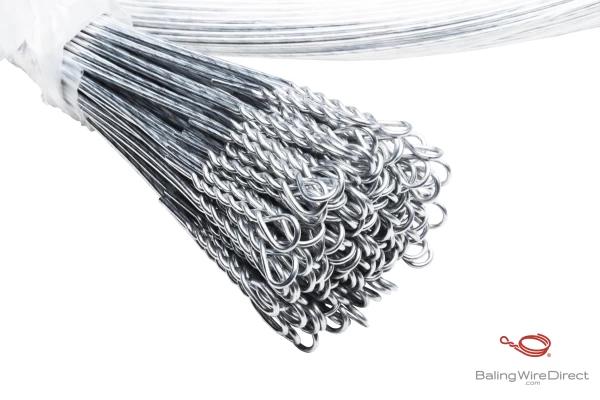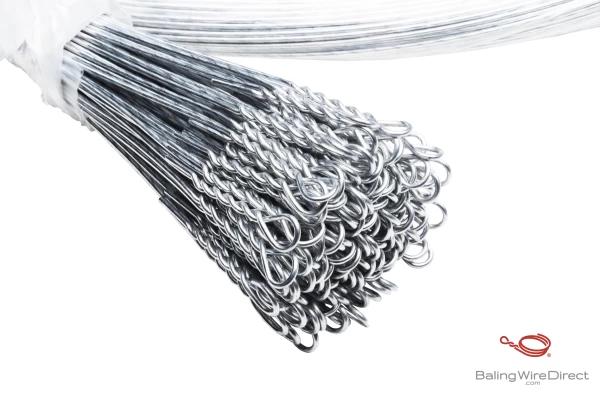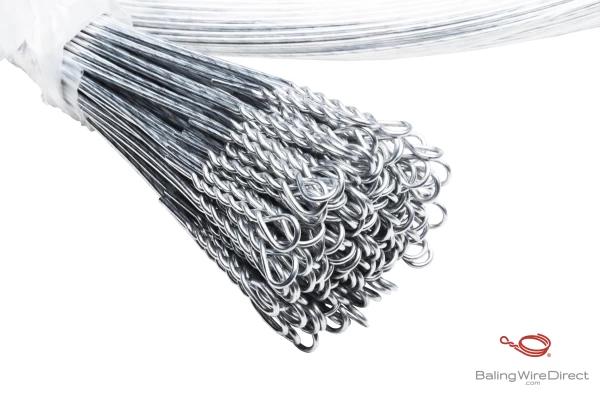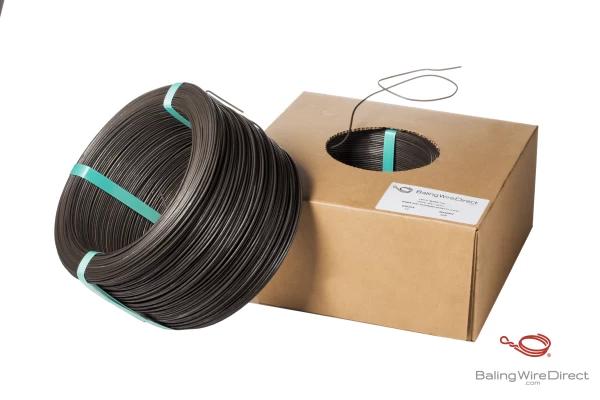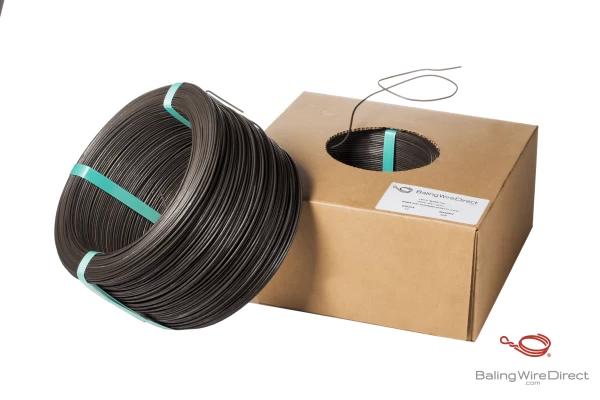12 Gauge Galvanized Carrier Stem Wire
$1,763.97$1,940.37
| Wire gauge | 12 Gauge |
| Load strength | 649 – 823 lbs. |
| Tensile strength | 75,000 – 95,000 psi (517.10 – 655.001 MPa) |
| Diameter (inch/mm) | Actual Size (.102" - .104" / 2.5908 mm - 2.6416 ) |
Add to cart to calculate freight
Wire specifications
100% American-made 12 gauge galvanized wire, manufactured to meet the highest standards of quality and performance. Find the best baling wire products at Baling Wire Direct.
| Wire gauge | 12 Gauge |
| Load strength | 649 – 823 lbs. |
| Tensile strength | 75,000 – 95,000 psi (517.10 – 655.001 MPa) |
| Diameter (inch/mm) | Standard Wire Gauge or SWG (.104" / 2.6416 mm) | Actual Size (.102" - .104" / 2.5908 mm - 2.6416 ) |
| Elongation | 12% Min |
| Carbon grade | 1018 |
| Stem size | 1,330 lbs. (Approx.) |
| Feet per stem | 44,807 feet (Approx.) |
| Quality control | Extensive testing on every carrier |
| Finish | Hot-dip galvanized with molten zinc |
Use cases
Galvanized stem wire is can be used in manual vertical and horizontal balers to bale a wide range of recyclables, from paper to foam to tires. It can also be used as fencing wire, to secure pallets and drop ceilings, and for vineyard trellises and tree supports.
In addition, our baling wire is commonly used for:
The galvanization process
To protect against rust and other forms of corrosion, we hot-dip galvanize our stem wire. A zinc layer forms an oxidation-resistant barrier, providing a highly resilient defense against environmental elements.
Our galvanization process involves 7 key steps:
- Surface preparation: alkaline solutions are used to purify the baler wire, removing impurities and enabling strong zinc adhesion.
- Pickling: a hydrochloric acid bath removes residual oxides and scales, yielding a clean surface for the subsequent steps.
- Fluxing: a dip in zinc ammonium chloride flux solution prevents oxidation and promotes even zinc coverage.
- Galvanizing bath: the wire enters a molten zinc bath at approximately 450°C (850°F).
- Alloy formation: a chemical bond forms between the wire's iron and the zinc, resulting in protective zinc-iron alloy layers.
- Withdrawal: rollers carefully lift the wire from the zinc, regulating the coating thickness by allowing excess to drip off.
- Quenching: finally, the zinc-coated wire is rapidly cooled, setting the coating and completing the galvanization process.
The end result is a durable zinc coating that shields against corrosion and abrasion. An additional layer of microcrystalline wax sealant enhances protection, ensuring our wire products are clean and easy to use.
Galvanization classes we offer
Baling Wire Direct offers Class 1 and Class 3 galvanized wire. Class 1 is more economical but degrades much more quickly while Class 3 provides a thicker zinc coating that improves performance and longevity:
- Class 1 galvanized wire is used for recycling and farm applications, including fencing, caging, and vineyard/orchard trellising. Class 1 galvanization involves a single “dip” in a molten zinc bath, creating a relatively thin coating of about 0.28 ounces per square foot. Although more cost-effective, its lifespan is relatively short, ranging from 2–11 years depending on the environment.
- Class 3 galvanization creates a more durable and corrosion-resistant zinc coating of about 0.8 ounces per square foot, resulting from two dips in molten zinc. This extra thick layer of protection ensures baling wire lasts anywhere from 13–30 years. Class 3 galvanization is recommended for ultra-corrosive environments, such as coastal areas.
Wire products made in America
Our galvanized wiremanufacturing process is meticulously conducted to meet and exceed industry standards. It all starts with the raw materials: steel wire rods purchased from trusted American steel mills. Our mills provide complete metallurgical traceability specs and mill-test reports that guarantee the chemical composition necessary to deliver the load capacity and hi-tensile strength our customers expect.
Next, a team of over 120 specially-trained staff members and 5 on-site engineers carry out the production process.
To remove scaling and prepare the surface, the steel wire is fed through a mechanical descaler machine. This process subjects the wire to repeated kinetic-stress cycles causing the scale to flake away, leaving behind a clean, smooth wire. Mechanical descaling allows us to eliminate the use of harsh chemicals to improve product quality and reduce our environmental impact.
The wire is then fed through a continuous bull-block wire drawing machine for incremental diameter reductions before it is air-cooled to ensure a homogenous microstructure and optimize tensile strength.
The BWD quality commitment
As one of the largest baling wire manufacturing companies in North America, Baling Wire Direct aims to exceed quality expectations. We carefully oversee manufacturing and delivery to provide top-tier products, competitive prices, and a smooth ordering process.
Our proprietary Autoship™ platform sends updates via email or text message. Customers can access tracking details to stay up to date on the status of their shipments throughout our dependable 1–3 business day shipping schedule.
The Autoship™ system enables easy inventory tracking and automatic reorders calibrated to your usage levels. This simple and convenient tool and our quick delivery schedule guarantee you receive needed baling wire supplies before they run out.
You might be interested in
Galvanized steel wire is just one of our many high-quality baling wire products. Some of our other offerings include bale ties, black annealed wire, and high-tensile wire.







